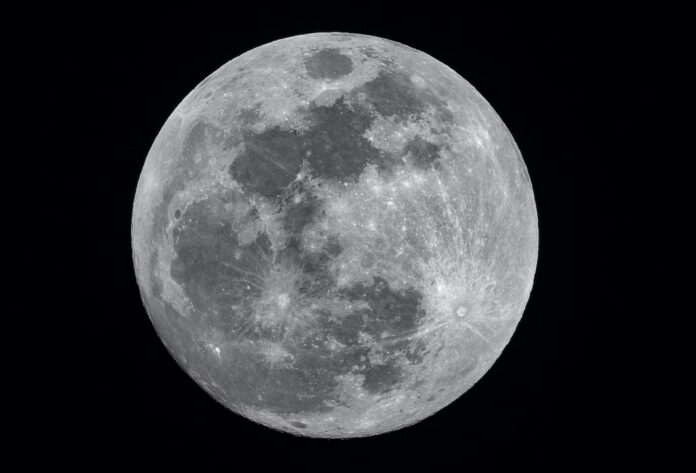The cosmos, with its constellations of stars, planets, and galaxies, has attracted the attention of humanity for thousands of years. It is no wonder that in one moment, we wanted to look at its spaces in more detail and capture the most exciting views. This is how astronomy and astrophotography arose; these still excite the imagination of every space fan.
Today, astrophotography is available to any enthusiast who wants to share the beauty seen through a telescope. Astrophotography shows each object in all its glory. Experienced astrophotographers might obtain images that may not be inferior to the frames from the Hubble telescope. To learn more about modern methods of space exploration, we recommend visiting alloptica.com. The site is a specialized guide to the world of optical devices created by a big fan of astronomy.
To take pictures of the Moon and other wonders of outer space, amateur astronomers use various tools, from conventional film or digital cameras with photo lenses to homemade modified optical devices. They allow you to get the simplest shots. However, if you plan to approach the matter seriously, it is worth considering the technique of taking space photos through a telescope.
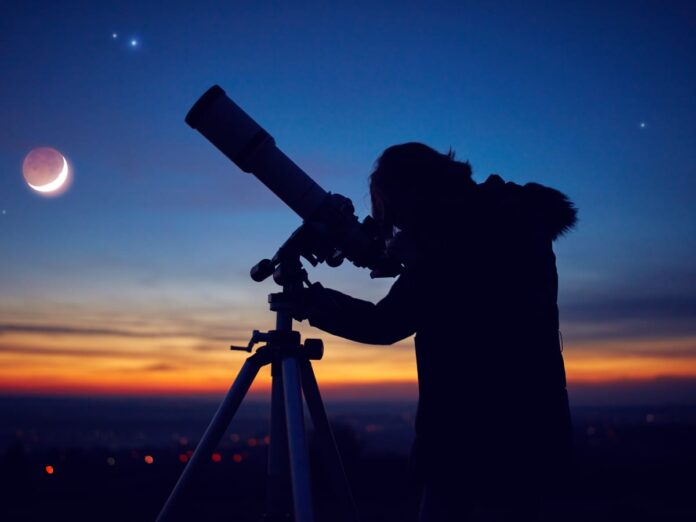
The telescope as a Lens
It is astrophotography’s most complex but fascinating method. In this case, the telescope is used as a camera lens and directs light onto the camera’s film or CCD matrix. The quality of such photos is much higher due to the magnifying and light-accumulating telescope properties.
Telescopes that can be used for photography are called camera telescopes. They interact with DSLR cameras and have all the necessary characteristics to take high-quality photos of distant and nearby celestial bodies. Such telescopes are best suited for astrophotography.
Types of Telescopes
Each telescope and the optical system has its nuances. Today, there are 3 main types of telescopes on the market. Let’s take a closer look at each type and its features:
-
Refractors
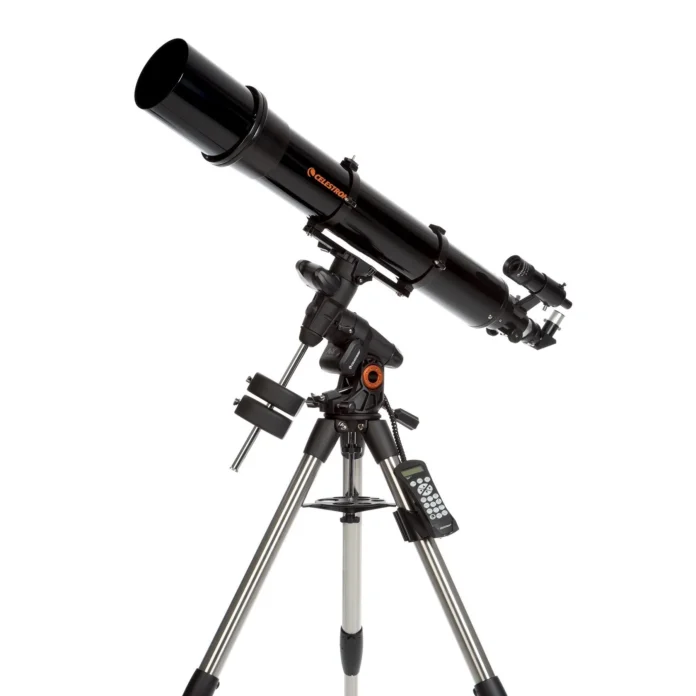
It’s the same classic telescope you imagine when you think of sky gazing. These are solid devices, but their lens system has its specifics. The bright objects you see through this telescope have a colored fringing (chromatic aberration). In refractor-achromatic models, this feature is present to a greater extent. Apochromat models, particularly Scientific ED127, are practically devoid of this effect. To provide a contrast image, they have expensive types of glass, affecting the telescope’s cost.
-
Reflectors
The developer of reflecting telescopes is Isaac Newton, so they are often called “Newtons.” This is one of the most popular types. One such model is the Orion 10015 StarBlast 4.5 Astro Reflector Telescope (Teal). The reflectors with a parabolic mirror are the highest quality and most expensive, while systems with a spherical mirror are the cheapest.
-
Catadioptrics
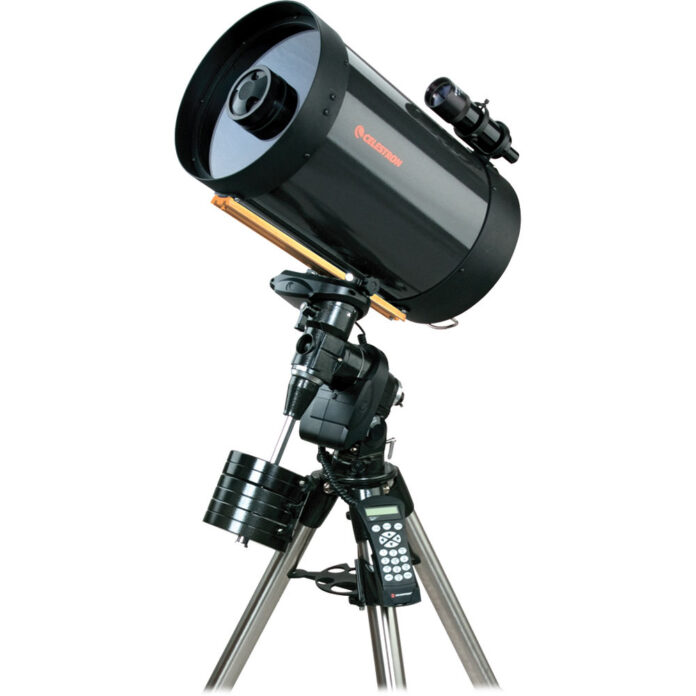
In such telescopes, lens and mirror systems are combined, making it possible to compensate for image artifacts. They mostly boast compact dimensions and a long focal length. At the same time, they are also one of the most expensive models. Wide-aperture Maksutov-Cassegrain systems, such as the Celestron Nexstar 4SE, and Schmidt-Cassegrain systems, the Celestron Nexstar 6SE, are popular choices among lunar photographers.
Important Parameters of Telescopes
If you’re ready to master astrophotography with a telescope, you need to choose one that fits your priorities. After all, not every telescope is designed to take pictures of the stars.
Aperture
Aperture, the diameter of the “eye” of the telescope, is the most crucial parameter. Space is dark, so you need to capture as much light as possible when taking photos. Thus, the larger aperture, the more clearly you can see the celestial body and its details.
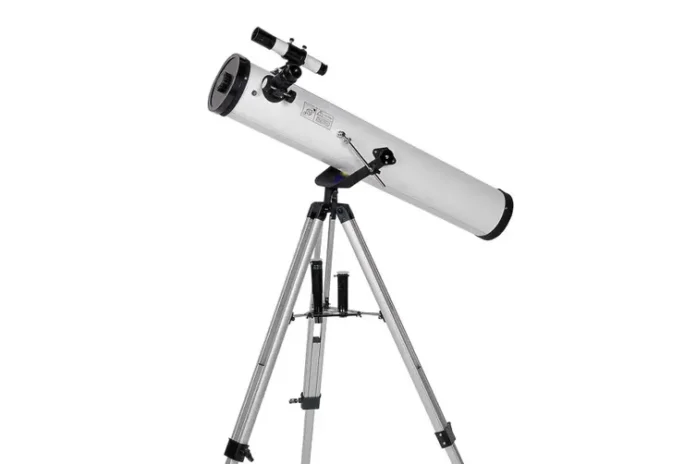
Focal length
This parameter fixes the distance at which the telescope can focus. For example, Celestron’s Rowe-Ackermann Schmidt astrograph has a focal length of 620 mm. Telescopes with a long focal length magnify the object but reduce the view field of the aperture. Telescopes with a short focal length fix objects in a larger field of view.
When choosing a device, consider which space objects you are primarily interested in. If you want to photograph small, distant bodies like the Moon and planets, you should look at a long focal length telescope. On the other hand, telescopes with short focal lengths suit for filming distant objects like the Orion constellation and galaxies.
Focal ratio
The focal ratio determines how much light a telescope captures. To find out it, you need to divide the focal length by the size of the aperture: the smaller this number, the larger the focal ratio of the telescope. In practice, this means you should examine your willingness before buying.
Do you dream of shooting the Milky Way? Then it would help if you stopped at models with a larger focal ratio. If you want to take photos of big individual objects, for example, Mars, consider telescopes with a lower focal ratio. For example, the Zhumell Z114 model has an aperture of 114 mm, a focal length of 465 mm, and a focal ratio of f/4.07.
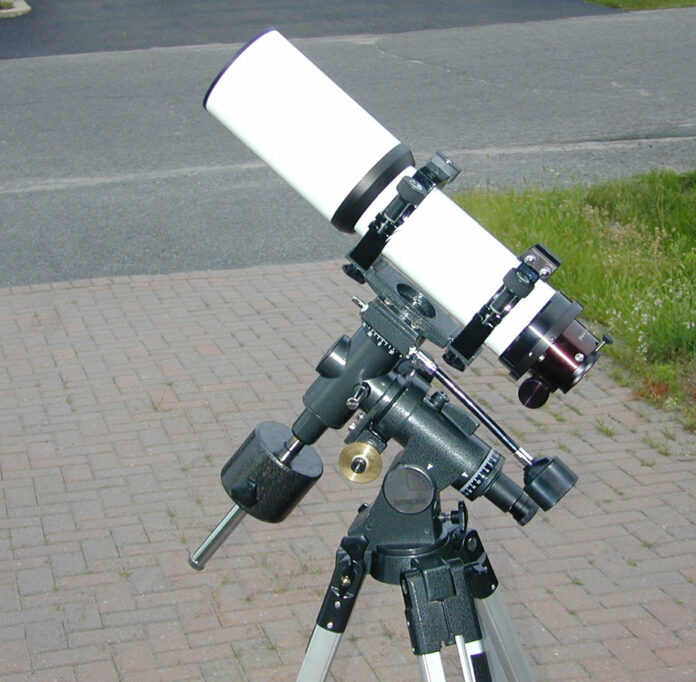
Mounting
A firm tripod makes it impossible to shake the telescope at the most crucial moment. Often the stand does not come with the telescope, so you have the freedom to choose the option that best serves your needs.
There are 2 types of mounting:
- Azimuthal — axes move vertically and horizontally;
- Equatorial — one axis is directed towards the pole. After pointing the telescope at the object, you need to turn the axis knob to follow the object. Such tripods are usually more expensive than azimuth models.
When choosing a tripod, consider the presence of drives or GoTo mounts, allowing you to open more possibilities for astrophotography.
Choosing a Telescope for Photographing the Moon: Tips
If you have finally decided to buy a telescope, simple tips can help you make the right decision:
- Remember to distinguish the details so that the picture does not turn out blurry.
- Consider the size of the device. If the telescope is too small, it will not allow you to get a large enough image that can become a photo. On the other hand, the bigger the telescope, the easier it is to use it to take a picture.
- Finally, the shutter speed should be quick enough.
Taking an astrophoto is possible through almost any telescope. The main thing is that it has a motor drive and could track the movement of the stars.
We hope this article was helpful for you in your search for a telescope for taking spectacular photos of the Moon and other celestial bodies. Space is limitless, and so are your possibilities.

